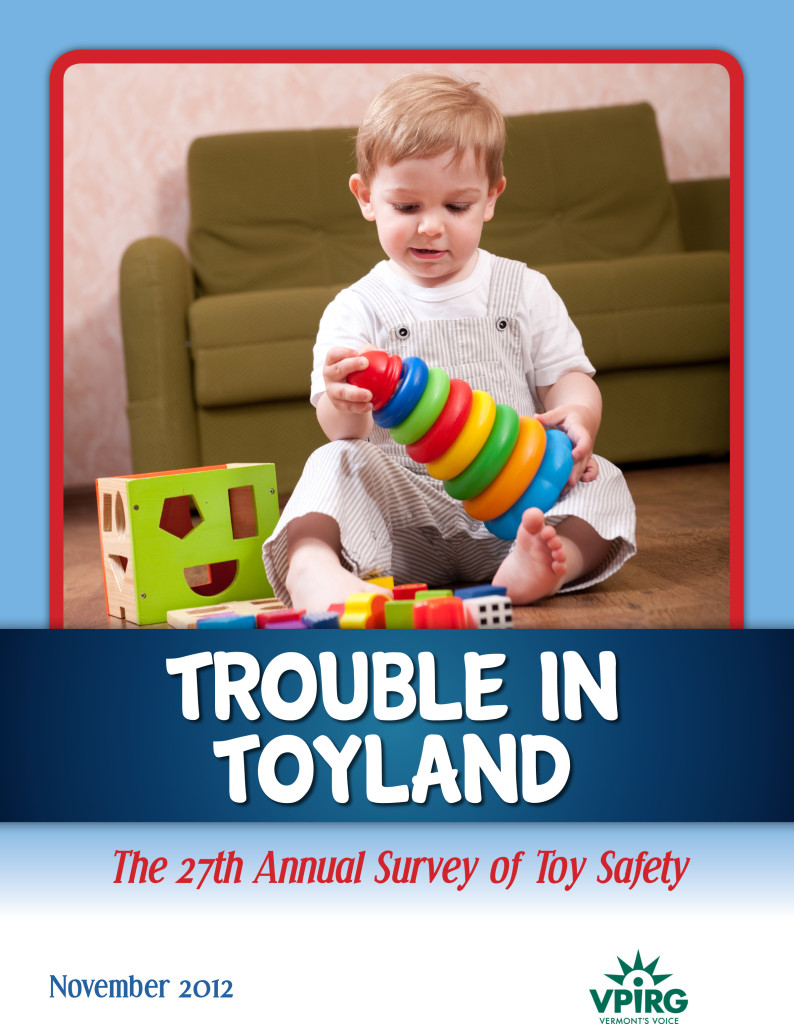As we head into the holiday shopping season, dangerous toys can still be found on America’s store shelves, according to VPIRG’s 27th annual Trouble in Toyland report.
VPIRG released a new report revealing the results of laboratory testing on toys for toxic chemicals including lead and phthalates, both of which have harmful health impacts on the development of young children. The survey also found small toys that pose a choking hazard, extremely loud toys that threaten children’s hearing, and toy magnets that can cause serious internal injuries.
The Trouble in Toyland report provides a list of dangerous toys that surveyors found on toy store shelves within the past month. The list includes a dangerous magnet toy, a plastic food set that is a choking hazard and a toy guitar that is harmful to little ears. Each year, thousands of children continue to be injured by unsafe toys and, tragically, between 2005 and 2010 more than 50 children choked to death on balloons, balls, toys, or parts of toys.
“The last thing we should have to worry about during the holiday season is if the toys we’re buying our kids are dangerous. As the mother of a toddler myself, I’m glad to see real progress in toy safety regulations in recent years. But it’s frightening to think about the hazardous toys that remain on store shelves,” said Lauren Hierl, environmental health advocate at VPIRG.
For 27 years, the Trouble in Toyland report has offered safety guidelines for purchasing toys for small children and provided examples of toys currently on store shelves that pose potential safety hazards. VPIRG also provides an interactive website with tips for safe toy shopping that consumers can access on their smartphones at http://www.toysafety.mobi/
Key findings from the report include toys recently found on the shelves of national chains which:
- Contain high levels of toxic chemicals, including lead and phthalates.
- Pose a choking hazard, despite a ban on small parts in toys for children under three.
- Are potentially harmful to children’s ears and exceed the noise standards recommended by the National Institute of Deafness and Other Communication Disorders.
- Contain small powerful magnets that can cause serious internal injuries if swallowed by children.
“Parents and toy givers need to remember that no government agency tests all toys before they hit store shelves. People should also remember that toys that are not on our list of examples could also pose hazards,” said Lauren Hierl. She concluded “The message today is clear: parents have to stay vigilant, and we must continue pushing for the strongest possible protections from unacceptable hazards like toxic toys.”

